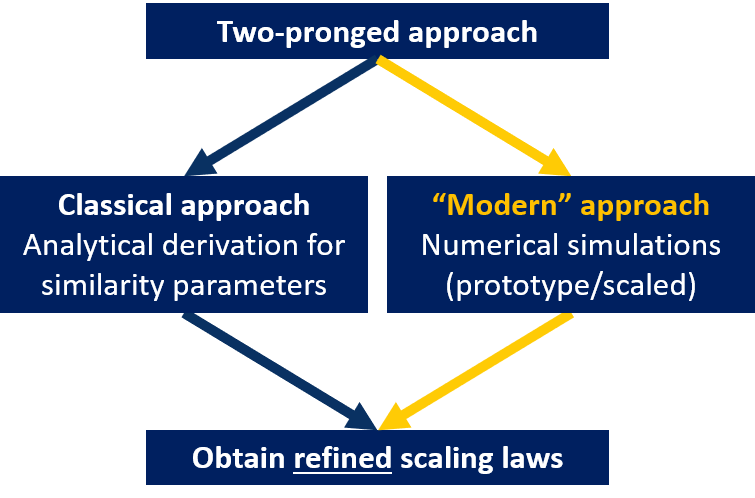Published: Aug 15, 2019 by Daning Huang

A long-standing challenge in the aerothermoelastic analysis is the lack of hypersonic aerothermoelastic scaling laws for aerothermoelastic testing, which precludes experimental validation of the modeling tools. This approach is impractical due to the lack of aerothermoelastic scaling laws required for the construction of scaled models and mapping the experimental results back to the full-scale prototype. Therefore, it is not surprising that the design of airbreathing hypersonic vehicles has encountered numerous difficulties in the past, including failures during flight as well as high-temperature structural testing. The work conducted on hypersonic vehicles in the 1960s concluded that complete hypersonic aerothermoelastic similarity is impossible to achieve for scale ratios that differ from unity.

We have developed a novel two-pronged approach for obtaining aerothermoelastic scaling laws, which overcomes the difficulties encountered in the earlier analytical work. The two-pronged approach combines the classical theoretical framework with modern simulation based on computational aerothermoelasticity, as illustrated in Fig. 2. The search for an aerothermoelastically scaled model is systematically formulated as a constrained multi-objective optimization problem, which is subsequently solved using our Python library called MOBO (Multi-Objective Bayesian Optimization).

The methodology and tools developed for aerothermoelastic scaling can be applied to testing components of a hypersonic vehicle. Some of the flight tests on the full-size vehicle could be replaced by experiments of the scaled models, which could reduce the cost of hypersonic vehicle development by one or two orders of magnitude. Therefore, the novel numerical scaling approach has the potential for saving considerable funds in the development cycle of a hypersonic vehicle and thus accelerates the advent of a new era of airbreathing hypersonic flight.
For more technical details on the numerical aerothermoelastic scaling laws, as well as access to the Bayesian optimization code, please refer to our papers SciTech2019 and AIAAJ2020.